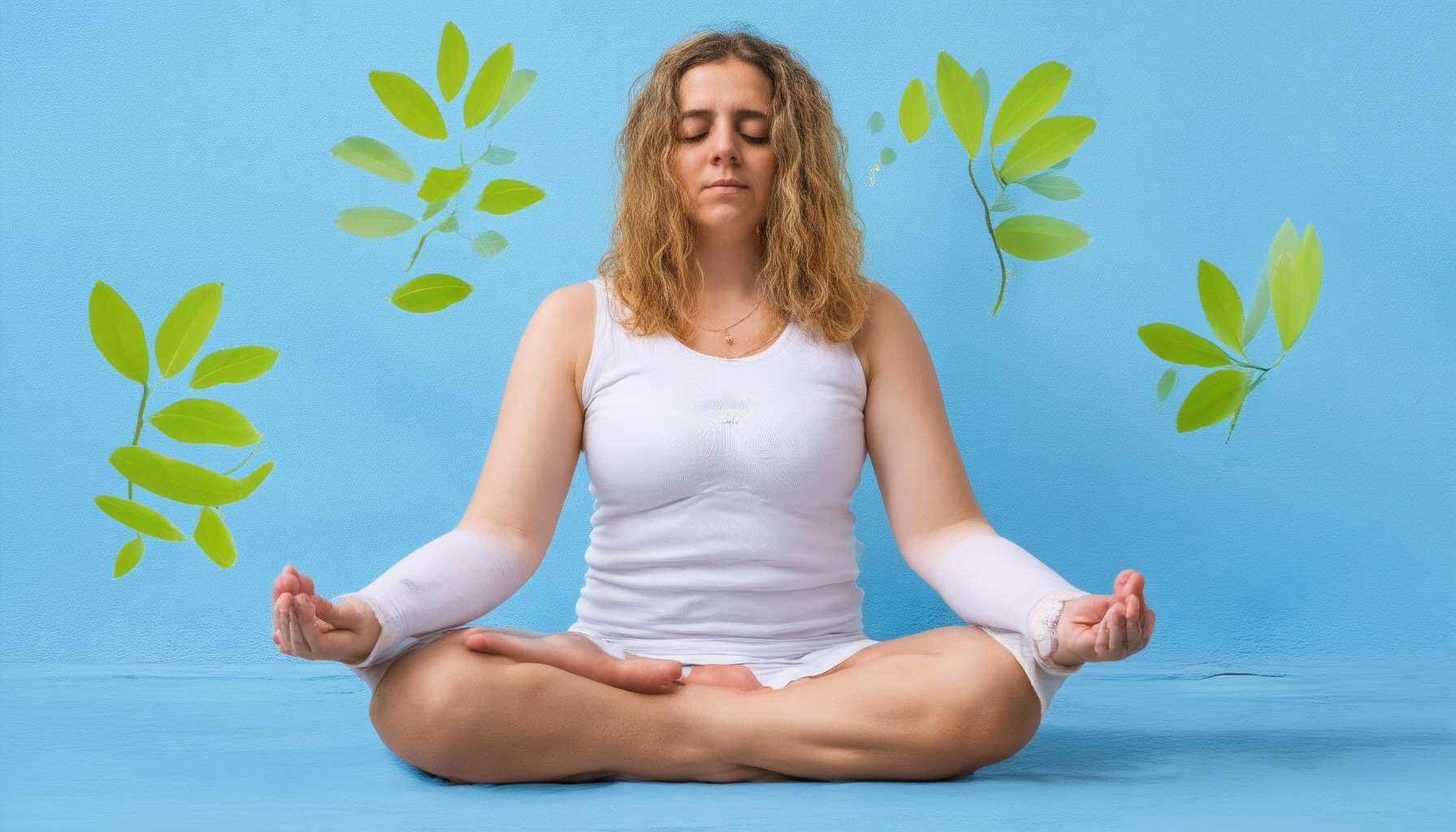Stress is a universal challenge that affects individuals across all walks of life, leaving many seeking effective ways to manage its effects. Among the most popular approaches, mindfulness techniques for stress have emerged as a powerful tool for fostering relaxation, clarity, and overall well-being. By focusing on mindful practices, individuals can learn to acknowledge their thoughts and emotions without judgment, thereby creating a sense of balance and control. This article delves into the top mindfulness practices for stress relief, exploring foundational concepts such as the 5 R’s and 3 C’s, while offering actionable insights to help readers integrate these techniques into their daily lives. Whether you’re new to mindfulness or looking to deepen your existing practice, this guide provides a comprehensive overview of the tools and strategies needed to reduce stress and enhance your quality of life.
Key Takeaways
– Connection: Cultivate deep, present-moment engagement with yourself and others to foster meaningful relationships and emotional balance.
– Control: Develop self-awareness to manage thoughts, emotions, and reactions, enabling thoughtful responses instead of impulsive actions.
– Compassion: Practice kindness and non-judgment towards yourself and others to navigate life’s challenges with empathy and build healthier relationships.
– Presence: Engage fully in the current moment to enhance appreciation of life and improve communication and understanding.
– Pacing: Manage time and energy sustainably to reduce stress, increase productivity, and maintain a balanced lifestyle.
– Prioritizing: Align your actions with personal values and goals to avoid distractions and focus on meaningful objectives.
– Pivoting: Embrace adaptability and flexibility to navigate life’s unpredictability and maintain resilience.
– Awareness: Pay attention to the present moment with curiosity and non-judgment to enhance mental clarity and emotional well-being.
– Breathing: Use breathing techniques to ground yourself and promote relaxation, fostering mental calmness.
– Compassion: Extend kindness universally, recognizing shared humanity, and practice gratitude to foster a mindset of abundance.
– Explore more mindfulness practices and resources by visiting our mindfulness guide or Chris and One.
What is the mindfulness technique for stress relieving?
We’ve compiled a list of effective mindfulness techniques to help reduce stress:
Body-Focused Techniques
- Progressive Muscle Relaxation: Tense and then relax each muscle group from toes to head, fostering physical calmness.
- Yoga Practice: Engage in gentle yoga poses to stretch and release tension in the body.
- Deep Breathing Exercises: Inhale deeply through the nose for four counts, hold, and exhale slowly through the mouth to calm the nervous system.
Breathing Techniques
- Box Breathing: Breathe in for four seconds, hold for four seconds, exhale for four seconds, and repeat to create a rhythm of calm.
- 4-7-8 Technique: Inhale quietly through the nose for four seconds, hold for seven seconds, exhale completely for eight seconds, and repeat for deep relaxation.
Mental Techniques
- Thought Awareness: Notice passing thoughts without judgment, labeling them as “thinking” to detach from stressful thoughts.
- Gratitude Practice: Reflect on things you’re grateful for during the day to shift focus away from stressors.
- Mindful Listening: Fully engage with others by listening without interrupting, fostering connection and reducing stress.
Guided Imagery
- Imaginary Escapes: Close your eyes and imagine yourself in a peaceful place, focusing on sensory details to create a mental escape.
- Visualization of Calm: Picture a serene environment and mentally practice being there whenever stress arises.
Daily Incorporation Tips
- Start with just five minutes a day and gradually increase to establish a consistent practice.
- Practice mindfulness during moments of stress, such as while commuting or before meetings.
- Use apps or guided sessions to help stay focused and learn techniques effectively.
By incorporating these mindfulness techniques into your daily routine, you can develop a personalized strategy to manage stress effectively. Remember, consistency is key to reaping the full benefits of mindfulness.
What Are the 5 R’s of Mindfulness?
The Five Rs of mindfulness are essential principles that guide the practice of mindfulness, helping individuals cultivate awareness, reduce stress, and foster a sense of connection. Here’s a breakdown of each:
- Recognition :
- Recognizing the present moment, including your thoughts, emotions, and surroundings.
- Understanding the importance of being fully present in daily life.
- Resistance :
- Resisting the tendency to get caught in negative thoughts or distractions.
- Developing the ability to observe thoughts without judgment or attachment.
- Rejection :
- Rejecting harmful habits or behaviors that hinder well-being.
- Choosing mindful actions over automatic reactions or impulses.
- Repetition :
- Practicing mindfulness regularly, even for short periods, to build habituation.
- Incorporating mindfulness into daily routines for sustained benefits.
- Relationship :
- Cultivating a deep sense of connection with oneself and others.
- Focusing on compassion, empathy, and understanding in interactions.
By embracing these principles, mindfulness becomes a powerful tool for personal growth and emotional well-being.
What Are Mindfulness Techniques?
Mindfulness techniques are practices designed to increase awareness, reduce stress, and foster a sense of calmness. These methods encourage individuals to live fully in the present moment, fostering mental clarity and emotional balance. Below are some of the most common mindfulness techniques:
Meditation
Meditation is one of the most widely practiced mindfulness techniques. It involves focused attention on the breath or a specific object, promoting relaxation and mental stillness. Types include:
- Zen Meditation
- Vipassana Meditation
- Mindfulness-Based Stress Reduction (MBSR)
Breathing Exercises
Controlled breathing techniques, such as deep belly breathing, help regulate the breath and calm the mind. Methods include:
- Box Breathing
- 4-7-8 Breathing
- Diaphragmatic Breathing
Yoga
Yoga combines physical postures with mindfulness, promoting harmony between the body and mind. Practices like Asanas (postures), Pranayama (breathing), and Dhyana (meditation) are often integrated into sessions.
Journaling
Writing down thoughts and feelings can help process emotions and gain insight. Journaling is particularly useful for tracking progress and exploring inner states.
Gratitude Practice
Taking a few moments each day to reflect on things you’re grateful for can shift perspective and foster positivity. This technique is often paired with journaling.
Body Scan
This technique involves systematically tensing and relaxing different parts of the body to promote relaxation and awareness. It is commonly used in mindfulness-based therapies.
Visualization
Imagining a peaceful place or visualizing positive outcomes can reduce stress and enhance mental well-being. This practice is often used during meditation or as a standalone exercise.
Acceptance
Practicing acceptance involves acknowledging and embracing the present moment without judgment. This can help reduce anxiety and promote a more balanced mindset.
Setting Intentions
At the start of the day, setting an intention or goal can provide direction and motivation. This practice encourages focusing on meaningful objectives throughout the day.
Exploring Common Misconceptions
Myth: Mindfulness Requires Hours of Practice
In reality, even short periods of mindfulness can yield benefits. Consistency is more important than duration.
Myth: Mindfulness Is Only for Certain People
Mindfulness is accessible to anyone willing to try. It doesn’t require specific traits or backgrounds.
By incorporating these techniques into daily life, individuals can cultivate greater mindfulness and enjoy improved mental health. Remember, the key is to find what works best for you and maintain patience as you develop your practice.
The Three Cs of Mindfulness
Mindfulness is often broken down into key concepts to understand its essence and benefits. Here are the three primary components, known as the “Three Cs” of mindfulness:
- Connection : This refers to fostering a deep sense of connection with oneself and others. It involves being present in the moment, fully engaged, and attuned to your surroundings and inner state.
- Control : This aspect focuses on developing self-awareness and managing your thoughts, emotions, and reactions. By cultivating control over your mental processes, you can respond thoughtfully rather than react impulsively.
- Compassion : This involves being kind and non-judgmental toward yourself and others. Practicing compassion helps in navigating life’s challenges with empathy and understanding, leading to healthier relationships and emotional well-being.
These three Cs work synergistically to promote mental clarity, emotional balance, and overall well-being through the practice of mindfulness.
What Are the 4 Ps of Mindfulness?
Mindfulness is often broken down into its core components, commonly referred to as the “4Ps” of mindfulness. These principles guide individuals in cultivating awareness, intentionality, and adaptability in their daily lives. Here’s a breakdown of each:
- Presence :
Presence is the foundation of mindfulness, emphasizing being fully engaged in the present moment. It involves noticing your surroundings, sensations, and emotions without judgment. Practicing presence helps individuals build meaningful connections and appreciate life’s transient nature. For instance, during a conversation, being fully present allows for deeper communication and understanding. - Pacing :
Pacing relates to managing time and energy sustainably. It encourages individuals to work at a comfortable rhythm rather than rushing through tasks. By slowing down, people can reduce stress and increase productivity. Pacing also involves recognizing when to step back and recharge, promoting a balanced approach to life. - Prioritizing :
Prioritizing focuses on aligning actions with values and goals. It involves discerning what truly matters and what can be set aside. This principle helps in avoiding distractions and channeling energy toward meaningful objectives. Techniques like the Eisenhower Matrix can aid in evaluating tasks by urgency and importance. - Pivoting :
Pivoting is about adaptability and openness to change. Life is unpredictable, and being able to shift perspectives or plans is crucial. This principle encourages resilience and flexibility, allowing individuals to navigate challenges and opportunities effectively.
By integrating these 4Ps—presence, pacing, prioritizing, and pivoting—individuals can enhance their mental well-being and overall life satisfaction. Each component supports a holistic approach to mindfulness, fostering awareness, balance, and intentional living.
For further exploration, visit our mindfulness guide for practical exercises and insights.
What Are the ABCS of Mindfulness?
Mindfulness is a practice rooted in awareness, compassion, and intentionality. To understand its essence, let’s break it down into the ABCS:
Awareness
Awareness is the foundation of mindfulness. It involves paying attention to the present moment with curiosity and non-judgment. Here’s how to cultivate it:
- Stay Present : Focus on your senses and observe your surroundings without labeling them as good or bad.
- Notice Emotions : Acknowledge feelings without reacting impulsively. This helps in managing stress and emotional reactivity.
- Be Curious : Explore thoughts and sensations without attachment or aversion. This fosters a deeper understanding of oneself.
Breathing
Breathing is a cornerstone of mindfulness practices. Effective breathing techniques can ground you and enhance mental clarity:
- Nose to Mouth Technique : Inhale deeply through the nose and exhale completely through the mouth. This creates a calming rhythm.
- Bellows Breath : Practice deep, controlled breaths to release tension and promote relaxation.
- Alternate Nostril Breathing : Inhale through one nostril and exhale through the other. This balances energy and calms the mind.
Compassion
Compassion is the heart of mindful living. It involves kindness toward yourself and others, recognizing shared humanity:
- Self-Compassion : Treat yourself with the same empathy you’d offer a friend. This reduces self-criticism and builds self-esteem.
- Universal Compassion : Extend goodwill to everyone, understanding that we all face challenges. This fosters connections and reduces suffering.
- Practice Gratitude : Focus on the positive aspects of life, fostering a mindset of abundance and thankfulness.
Conclusion
The ABCS of mindfulness—Awareness, Breathing, and Compassion—offer a holistic approach to living fully engaged and authentically. By mastering these elements, you can navigate life’s challenges with resilience and find moments of peace amidst chaos.
Explore more mindfulness resources on Chris and One to deepen your practice and discover actionable techniques for everyday life.









0 Comments